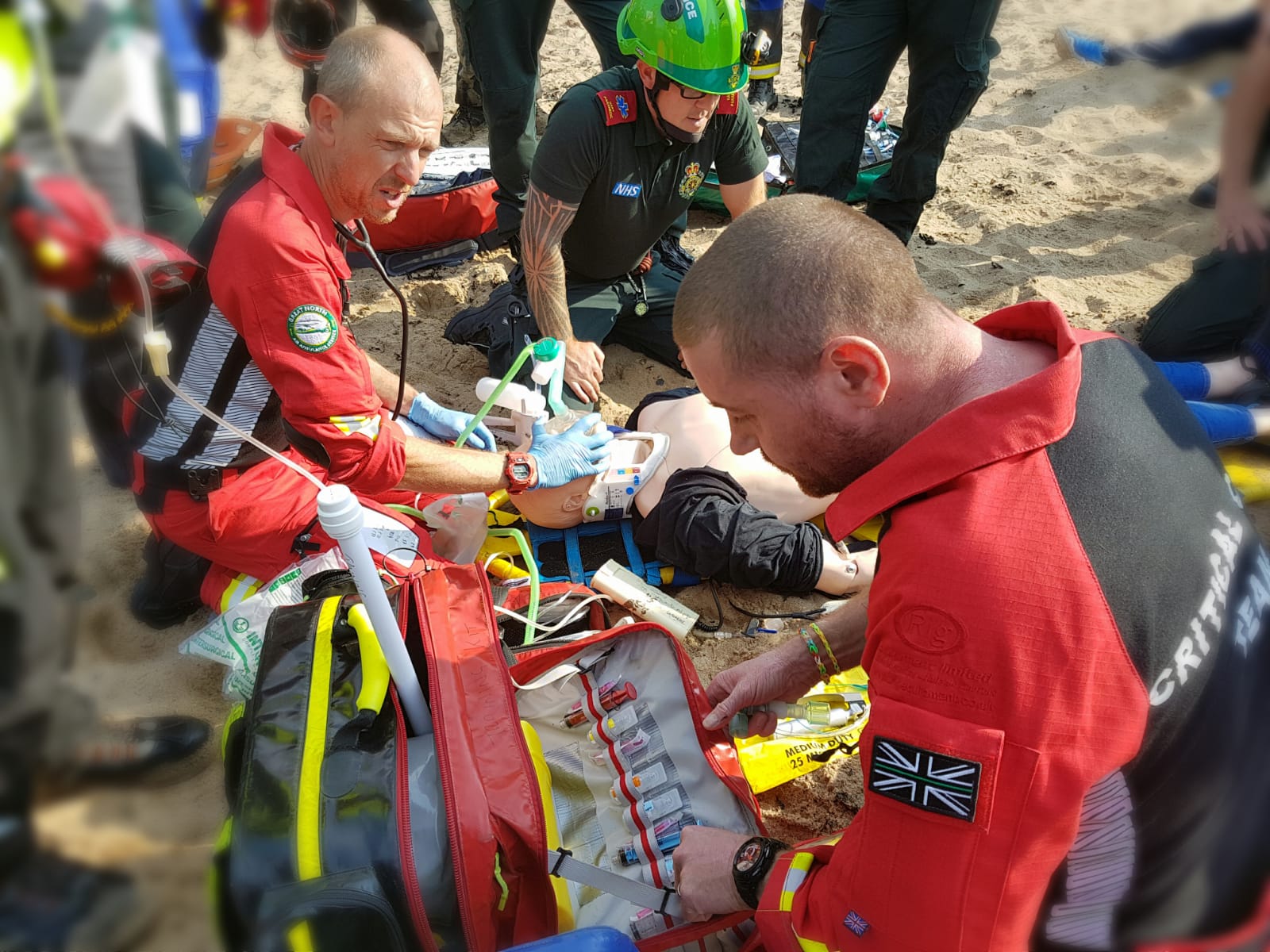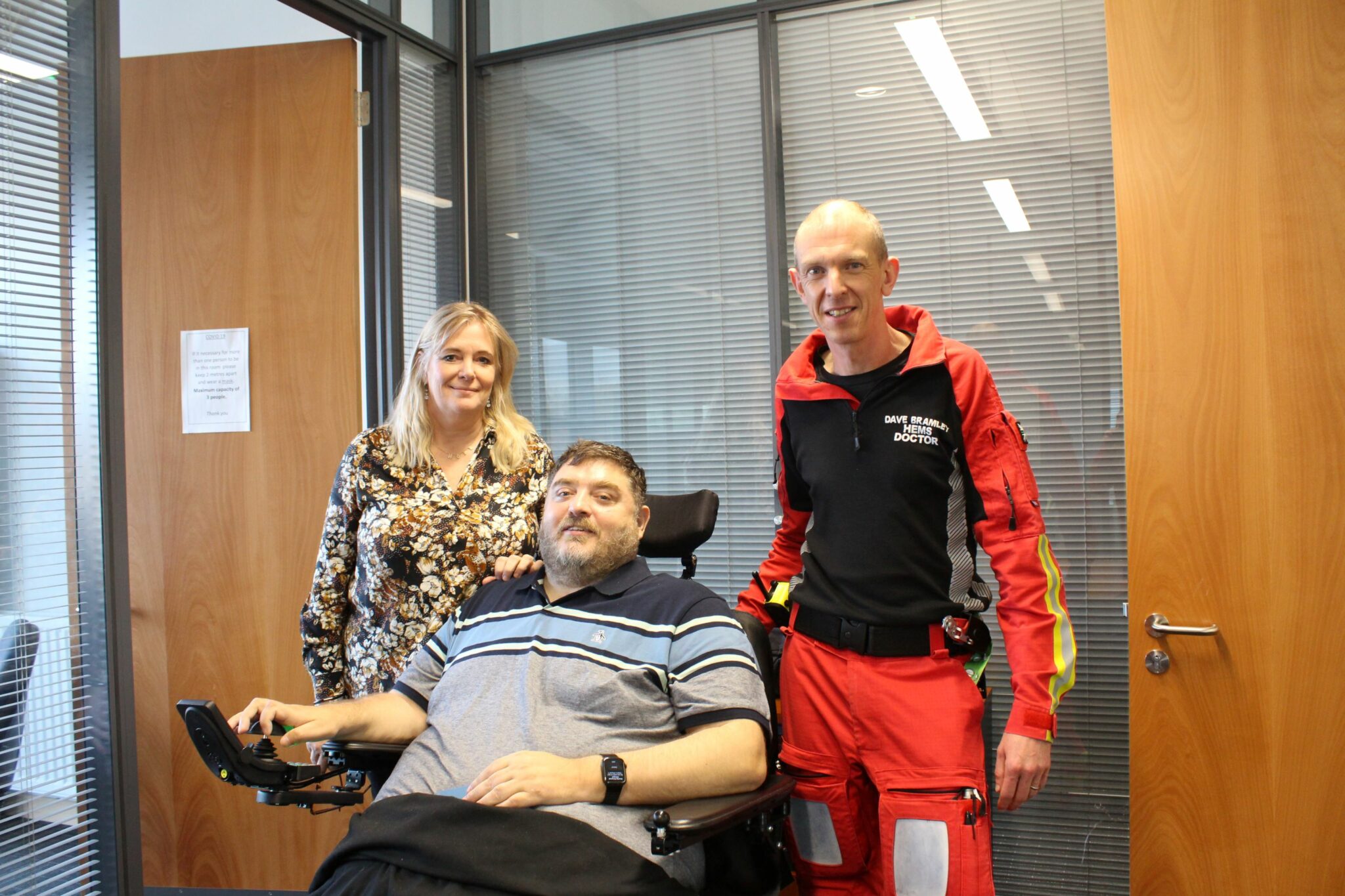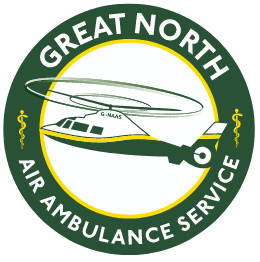Dr Dave Bramley has been involved with GNAAS since we first introduced doctors on board more than 20 years ago.
When Dave’s not working shifts on our aircraft and rapid response vehicles, you’ll find him in the Emergency (A&E) Department as a Consultant in Emergency Medicine at Sunderland Royal Hospital and South Tyneside District Hospital.
We spoke with Dave to learn more about his long and varied career in medicine, which has played a vital role in improving patients’ chances of surviving and recovering from major trauma.
How long have you worked for GNAAS?
I started at GNAAS in 2003 as a volunteer doctor but it was when GNAAS were just starting to look at what the role of a doctor would be in this area, and what training would be needed. I essentially observed and assisted the paramedics and added some clinical advice and skills where possible.
GNAAS was at that time developing a training programme for doctors which included not only development of the necessary medical skills, but also new knowledge and skills in areas such as aviation, scene safety, and working with other agencies such as the fire and rescue service, and mountain rescue.
By 2006 I was able to arrange specific time in my Emergency Medicine training to undertake a formal GNAAS fellowship post including completion of the Helicopter Emergency Medicine Crew Course. Following successful completion of the training course (part of which was based with London HEMS), I then undertook a period of observed shifts before passing my final “sign-off” assessment and becoming part of the GNAAS operational team.

Did you always want to be a doctor?
When I was 17 I was intending to study chemical engineering at university and then I had a vision of me sitting in front of a computer all day, and I didn’t think that was something I had the patience to do.
In the meantime, I’d joined our local St John Ambulance unit and covered a few events, including motorsport racing, and on occasions we dealt with fairly serious injuries. I discovered that this was something I found both challenging and rewarding, and I started to think seriously about studying medicine.
Talk me through your medical career from the beginning up until now?
I did my medical degree at Sheffield University, which was a superb university (with brilliant rock climbing), and when I graduated I worked in hospitals in and around Sheffield for a few years.
I met my wife-to-be at university, and she was from the North East, so a few years after I qualified we moved up to the North East, and that’s when I started to specialise in Emergency Medicine and trained to become a consultant.
I’m currently a consultant in Emergency Medicine at Sunderland Royal Hospital and South Tyneside District Hospital, so I work in the Emergency Departments at both hospitals, and I’m also Clinical Director of Urgent and Emergency Care for South Tyneside and Sunderland NHS Foundation Trust so I’m involved in some of the strategic management there.


In 2007 there was a national paper that came out looking at trauma care across the country and one of the recommendations was that every area should have a trauma network and so, with the backing of GNAAS, I arranged a conference and following that, I established the Northern Trauma Network, which I led for a number of years.
I also worked with NHS England to help establish national trauma networks and in 2012 that led to the national bypass protocols where severely injured patients were then taken directly to the most appropriate hospital rather than just the nearest hospital.
Throughout that time I also was part of a national working group looking at the training of doctors to work alongside the ambulance service to deliver advanced care at the scene of incidents, which led to the development of the now nationally accredited and recognised sub-specialty of Pre-Hospital Emergency Medicine (PHEM).
Then I established a training programme to deliver this PHEM training in the North East and North Cumbria through GNAAS and also with the North East Ambulance Service.
What is a typical day in hospital?
There is rarely a typical day in the Emergency Department – no two days are ever the same, other than they are always busy! I work with some brilliant colleagues and it is constantly challenging, tiring, frustrating and rewarding.
Could you talk me through your involvement in major incident planning?
I’ve always had an interest in major incident management, which was initially looking purely at how hospitals can best respond, and then increasing to look at what can be done before the patients reach hospital.
I’ve been involved in emergency planning since about 2002 but more recently following the Manchester Arena bombing I have been working within a national team at NHS England to look at the current pre-hospital major incident guidelines.
Within this role I also co-chair one of the subgroups looking at developing new clinical guidelines and specifically looking at ways to deliver enhanced care to the most severely injured, and how this might be coordinated.


Do you have any highlights from your career?
There are a number of things that are really rewarding in my career, and these cover everything from some fairly dramatic emergency interventions which save lives, to knowing you have been able to really help someone with something that might not have been life-threatening, but was significantly affecting their quality of life and your intervention has made a real difference to them.
It is also really rewarding knowing the impact of some of the developments I have been involved with, such as the Northern Trauma Network which has resulted in numerous lives being saved every year.
One of the reasons for my interest in pre-hospital care has been seeing patients arrive at hospital with very severe injuries that could only be managed by what was traditionally considered hospital-level care, but by the time they got to hospital it was too late and nothing could be done.
I was drawn to pre-hospital emergency medicine because I saw a real opportunity to make a difference to that small number of patients who were very severely injured or unwell by delivering advanced care that requires skills that you can only really develop and maintain if you also regularly work in hospitals.
One of the GNAAS cases I’ll always remember is Nick Copson who was incredibly severely injured in a road traffic collision and needed a number of advanced interventions at the scene to keep him alive.


More recently there was a climber in the Lake District who had fallen and was initially trapped in an awkward location. He had multiple injuries including a collapsed lung and then developed a life-threatening complication called a tension pneumothorax which can be very rapidly fatal, but we were able to quickly sedate him and insert a chest drain at the scene which was life-saving.
I remember looking around on that job and seeing approximately 20 members from the mountain rescue team plus the team from GNAAS, and it was a humbling feeling to be part of this team of charity-based providers, who had all come out just to help that one person in this critical situation and we all worked really well together with our unique and complementary sets of skills.
Outside of work what do you like to do in your downtime?
My wife and I have four sons, so life is often busy with family activities. We enjoy mountains and the outdoors including running, fell walking and climbing, along with playing music (I am by far the least talented member of our family band!). The difficulty is finding time to do it all…


